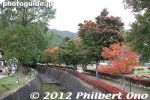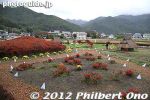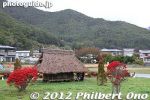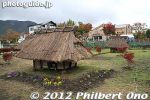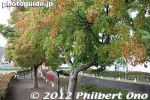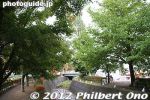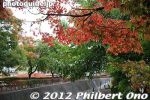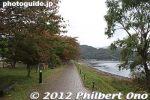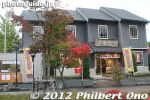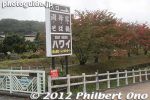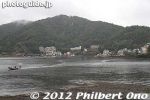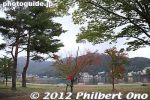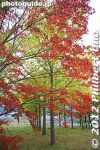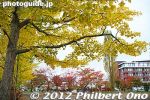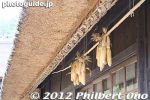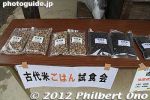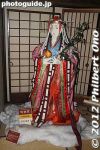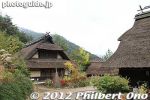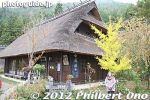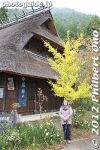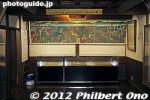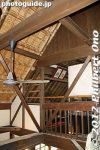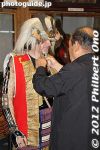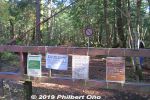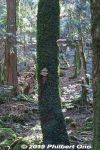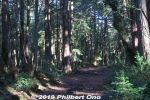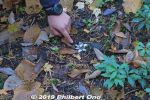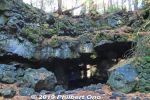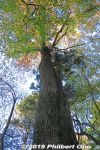 Image search results - "kawaguchi" Image search results - "kawaguchi" |
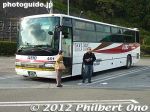
There are five lakes at the northern foot of Mt. Fuji known as Fuji Goko (富士五湖). They are easily accessible by bus from Shinjuku, Tokyo, taking 2-3 hours for around 4,000 yen round trip.
|
|
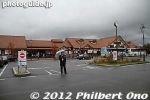
The second largest of the five lakes at the foot of Mt. Fuji, Lake Kawaguchi is well developed for tourists. This is Kawaguchiko Station on the Fujikyuko Line. From central Tokyo, going by bus is more convenient, although traffic delays a always possible
|
|
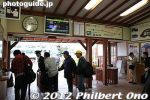
Inside Kawaguchiko Station on the Fujikyuko Line. Buses from Tokyo stop at Kawaguchiko Station as well as local toruist buses. Kawaguchiko Station is the area's transportation hub.
|
|
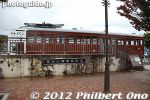
Train display in front of Kawaguchiko Station.
|
|
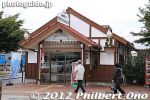
Next to Kawaguchiko Station is this tourist information office. Get free pamphlets, maps, etc. English spoken. Many foreign tourists also visit the Five Lakes of Mt. Fuji.
|
|
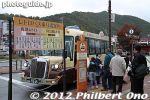
In front of Kawaguchiko Station are a number of bus stops. A convenient tourist retro bus goes around the lake and neighboring lakes. I visited in autumn.
|
|
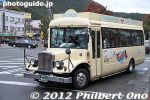
Two types of retro tourist buses. One goes to the other side of Lake Kawaguchi and one goes to Lake Saiko.
|
|
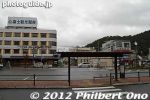
Bus stops in front of Kawaguchiko Station.
|
|
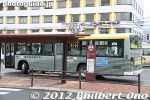
You can also catch a bus to Lake Yamanaka and to Mt. Fuji's 5th Station which is about halfway up the mountain.
|
|
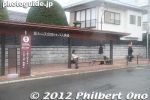
Lake Kawaguchi is quite well developed for tourists with lodging, shops, museums, onsen baths, and tourist buses. It's the second most popular Fuji Goko lake after Lake Yamanaka.
|
|
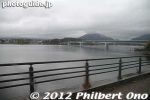
I caught a retro bus to go to the other side of the lake.
|
|
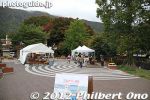
Lake Kawaguchi holds its autumn foliage festival (Koyo Matsuri) from late Oct. to mid-Nov. on the northern shore where there is a long corridor of maple trees.
|
|
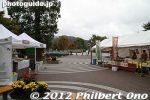
A few food stalls.
|
|
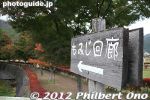
Corridor of maple trees (momiji), but I was too early in Oct.
|
|
|
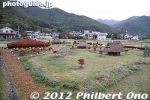
Adjacent to the maple trees was this park or garden featuring small thatched-roof houses.
|
|
|
|
|
|
|
|
|
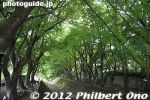
Most of the maple leaves at Lake Kawaguchi were still like this when I was there. They are late in turning color this year. Give them 10 more days.
|
|
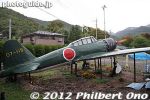
What in the world is this doing here, I asked myself at the end of the maple tree corridor. That's what I like about Japan, always something totally unexpected.A Japanese Zero fighter plane??
|
|
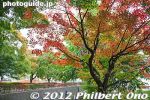
Autumn leaves at Lake Kawaguchi (northern shore). The trees are also lit up at night during the Koyo festival.
|
|
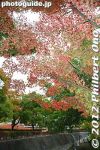
Maple trees at Lake Kawaguchi. One of the few that was red.
|
|
|
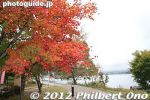
On the nearby shore, a few more maple trees.
|
|
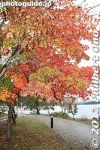
Lake Kawaguchi, Yamanashi.
|
|
|
|
|
|

There would be a view of Mt. Fuji from here. Most hotels are on the northern shore so they can see Mt. Fuji across the lake.
|
|
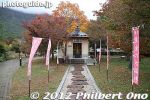
A small shrine dedicated to Fukurokuju, one of the Seven Gods of Good Fortune. He is the god of God of wisdom and longevity. 福禄寿
|
|
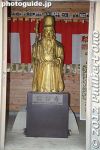
Fukurokuju, one of the Seven Gods of Good Fortune, is the god of God of wisdom and longevity.. 福禄寿
|
|

About Fukurokuju. This area of the lake has seven shrines for all of the Seven Gods of Good Fortune.
|
|
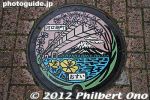
Manhole at Lake Kawaguchi, Yamanashi.
|
|
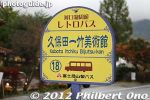
Bus stop for the retro tourist bus.
|
|
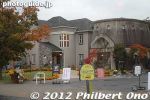
Museum at Lake Kawaguchi.
|
|
|
|
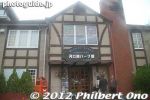
Herb Museum at Lake Kawaguchi.
|
|

Panorama of the southern shore of Lake Kawaguchi.
|
|
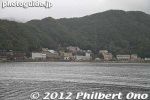
View of Lake Kawaguchi's northern shore.
|
|
|
|
|
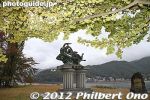
Southern shore of Lake Kawaguchi with a statue of two sister goddesses dancing over the lake. The sculptor was Gakuryo Nasu.
|
|
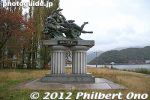
Southern shore of Lake Kawaguchi with a statue of two sister goddesses dancing over the lake. The sculptor was Gakuryo Nasu.
|
|

ABout the statue of two sister goddesses dancing over the lake. The sculptor was Gakuryo Nasu.
|
|
|
|
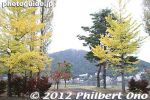
Southern shore of Lake Kawaguchi with gingko and poplar trees. I saw quite a few foreign tourists, including Chinese. It's a great weekend getaway for Tokyoites.
|
|
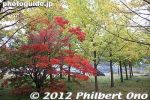
Maple and ginkgo trees on the southern shore of Lake Kawaguchi.
|
|
|
|
|
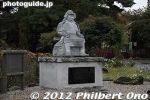
Statue of Kajiwara Kagetoki (1140-1200 梶原 景時) at Lake Kawaguchi. A warrior against the Taira.
|
|
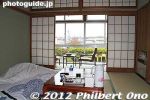
My room where I stayed at Lake Kawaguchi. It had a sun deck which provided a good view of Mt. Fuji. I paid only 4,800 yen for the night without meals.
|
|
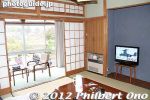
Nice Japanese-style room, but no Internet connection. I needed a break anyway.
|
|
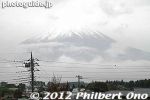
Morning view of Mt. Fuji from my room at Lake Kawaguchi. This is the only glimpse of Mt. Fuji I got during a cloudy and sometimes drizzly weekend.
|
|
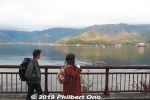
Strolling along the lake is pleasant for tourists.
|
|
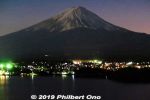
Evening view of Lake Kawaguchi and Mt. Fuji from a hillside hotel.
|
|

If you visit Lake Kawaguchi, you might as well visit Lake Saiko or Lake Sai, a short bus ride away. There are a number of tourist attractions like ice caves and bat caves.
|
|
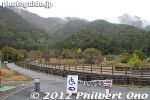
Decided to visit Saiko Iyashi-no-Sato Nenba, an outdoor museum of thatched-roof houses. It is one of the stops on the tourist bus circuit. 西湖いやしの里根場
|
|
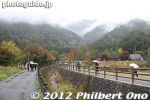
There are five lakes at the northern foot of Mt. Fuji known as Fuji Goko (富士五湖). They are easily accessible by bus from Shinjuku, Tokyo, taking 2-3 hours for around 4,000 yen round trip.
|
|
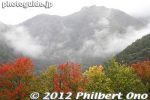
On 2010, Lake Saiko garnered national attention when the native species kunimasu, a type of salmon or black kokanee, thought extinct for 70 years, was discovered in the lake.
|
|
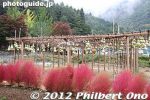
Gourd garden at Lake Saiko's Saiko Iyashi-no-Sato Nenba.
|
|
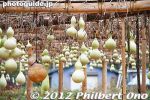
Gourds growing at Saiko Iyashi-no-Sato Nenba. I was soon to find out why they are growing these gourds. (Not for eating.) Whenever I see gourds, it reminds me of Hawaiian hula because they are used as hand drums.
|
|

About Saiko Iyashi-no-Sato Nenba. There used to be a real village here until it was destroyed by a typhoon. Residents moved away, and the village was reconstructed with thatched-roof homes. The museum opened in 2006.
|
|
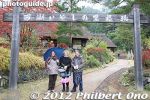
Entrance to Saiko Iyashi-no-Sato Nenba.
|
|

There are mostly tourist souvenir shops selling food and local crafts. One house sold ancient mochi (dark and red colored) and had an irori fireplace. Another house rented samurai armor and kimono to dress up in for only 500 yen.
|
|

In 1966, a big typhoon bringing heavy rains caused a mudflow that destroyed the homes here, killing 94 residents. The entire settlement was destroyed so the survivors moved to the opposite side of the lake.
|
|
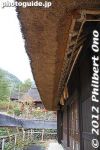
In 2006, they opened this outdoor museum as a testament to the old villagers here. Over the years, they expanded and added more houses. There are now 20 houses.
|
|
|
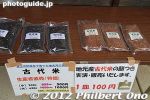
Ancient varieties of rice.
|
|
|
|
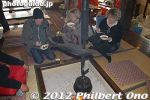
A house with an irori where we could have tea and sweets.
|
|
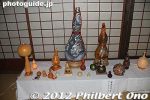
The gourds grown here are used for decorative purposes.
|
|
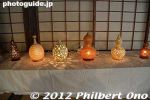
The gourds grown here are used for decorative purposes. Saiko Iyashi-no-Sato Nenba, Lake Saiko, Yamanashi.
|
|
|
|
|
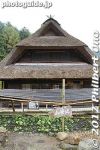
Wasabi garden.
|
|
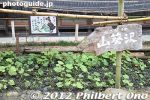
Growing wasabi with very clean water at Saiko Iyashi no Sato Nenba.
|
|
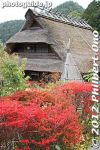
Saiko Iyashi-no-Sato Nenba, Lake Saiko, Yamanashi.
|
|
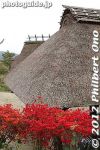
Saiko Iyashi-no-Sato Nenba, Lake Saiko.
|
|
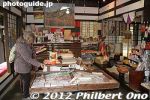
Souvenir shop.
|
|
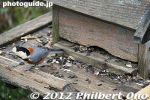
Bird house.
|
|
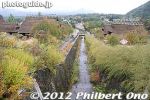
The outdoor museum is not huge, but big enough to spend a good amount of time. On clear days, it gives good views of Mt. Fuji.
|
|
|
|
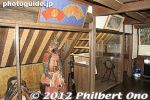
2nd floor of this house had woodblock prints.
|
|
|
|
|
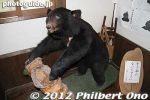
Stuffed bear
|
|
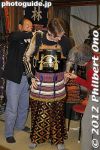
This house rented samurai armor and kimono to dress up in for only 500 yen.
|
|
|
|
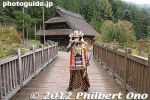
They allow you to walk around like this.
|
|
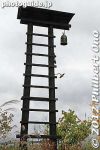
Fire watch tower.
|
|
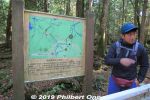
Aokigahara Forest is on the northwestern foot/slope of Mt. Fuji. This forest is also known as "Suicide Forest" since some people have committed suicide in Aokigahara.But apparently not in the part of the forest we hiked in. Our guides assured us that we wouldn't see any bodies...(and we didn't.) This is our English-speaking guide from this company:
https://www.the-highestpeak.com/english
|
|
|
|
|
|
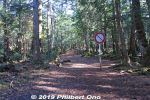
Despite its reputation, Aokigahara Forest didn't look or feel spooky or scary at all. It looked like any other forest in Japan. There are distinct trails and signs to follow. It's possible to get dangerously lost if you stray too far (more than 200 meters) from the trails. The forest has multiple trail entrances, and I was told a few of them have signs trying to discourage suicide.
|
|
|
|
|
|
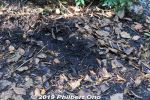
Lots of wildlife here too. Deer, bears, boars, woodpeckers, and squirrels. But we didn't see any, only their foot prints, digs in the ground, chipped tree trunks, etc.
|
|
|
|
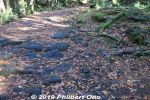
Aokigahara Forest is on a large lava flow of Mt. Fuji, so the ground is solid lava rock.
|
|
|
|
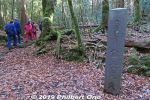
After walking about 15 min., we got to the Fuji Wind Cave (Fuji Fuketsu). This is the stone marker for it. There's no "wind" in the cave. It's just a name. 富士風穴 (ふじふうけつ)
|
|
|
|

Fuji Wind Cave first appears to be a big hole in the ground. It's a lava tube. You need a permit to enter. That's why having a licensed guide is good.
|
|
|
|
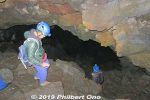
Our guide gave us overalls, a helmet with headlight, and rubber gloves for this excursion. The cave entrance is narrow, steep, and dark. But once inside, you can walk upright most of the way. This lava tube is about 230 meters long, 5 to 10 meters wide, 5 meters high (except for the small entrance). Advance permission is required from the local Board of Education to enter.
|
|

There are many lava tubes around Mt. Fuji. This one is less touristy, and not to be confused with the more touristy ones called Fugaku Wind Cave (富岳風穴) and Narusawa Ice Cave (鳴沢氷穴) near Lake Saiko.
|
|

Remains from a commercial activity.
|
|
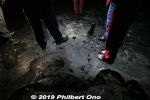
This part of the cave had ice all over the bottom.
|
|
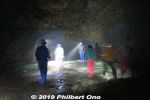
The helmet headlight was essential to see where we walked on craggy rocks and ice. When we all gathered here at the end of the lava tube, our guide told us to turn off our headlights to see how dark it was. Yes, it was pitch black. Our ears then concentrated on the water drops falling from the ceiling. Great place to meditate. The temperature was near freezing, but we had enough clothing. I wanted to ask the guide what would happen if there were a big earthquake while we were inside. But I refrained from doing so because I didn't want to alarm the others...
|
|
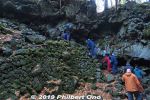
Getting out.
|
|
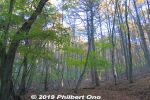
After the lava tube, we hiked further and came to a nice forest of Japanese beech trees nicknamed "Climax Forest." ブナ林
|
|
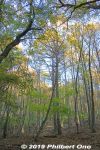
Forest of Japanese beech trees nicknamed "Climax Forest." ブナ林
|
|
|

Forest of Japanese beech trees nicknamed "Climax Forest." ブナ林
|
|
|

Restaurant where we had lunch. The building was designed to look like clouds or snow on Mt. Fuji. Houtou Fudo Kitamoto Branch (ほうとう不動) near Lake Kawaguchi.
|
|

Inside Houtou Fudo Kitamoto Branch restaurant (ほうとう不動).
|
|
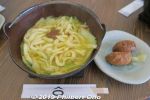
Lunch was Hoto noodles, famous in Yamanashi Prefecture. Thick, flat udon-type noodles in delicious miso-based broth, mixed with cut vegetables. Also came with Inari-zushi. http://www.houtou-fudou.jp/english.html
|
|

Imagine living in a town with a view like this. This is Fuji-Kawaguchiko town near Lake Kawaguchi.
|
|
|
|














